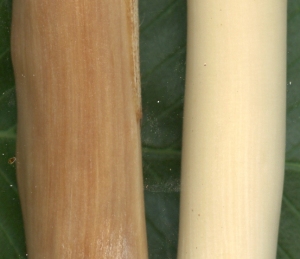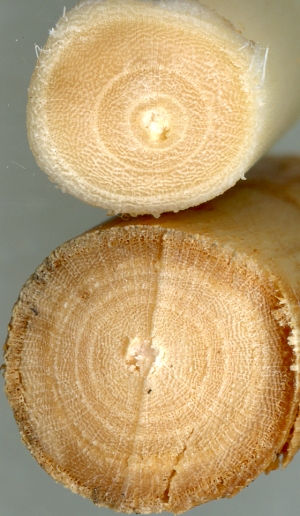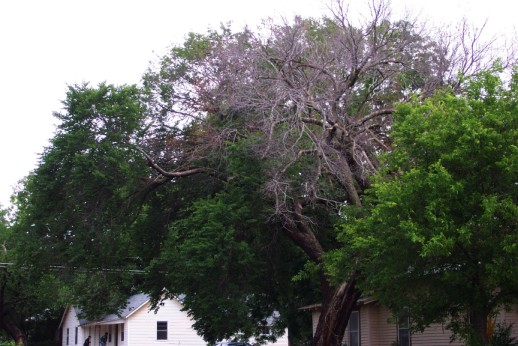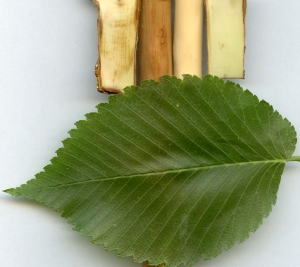Dutch Elm Disease
 Causal Agent
Causal Agent
The fungus Ophiostoma ulmi
Hosts
Native American Elm and other varieties.
 Symptoms
Symptoms
The first evidence of DED is a wilting or "flagging" in one or more of the upper branches.
Leaves on affected branches turn dull green to yellow and curl, then become dry, brittle
and turn brown. Some trees die several weeks after becoming infected, while others
wilt slowly and survive for a year or more. Peeling the bark from wilted branches
reveals light to dark brown streaks or blue to gray discoloration of the wood beneath
the bark. In cross section, this 
Control



